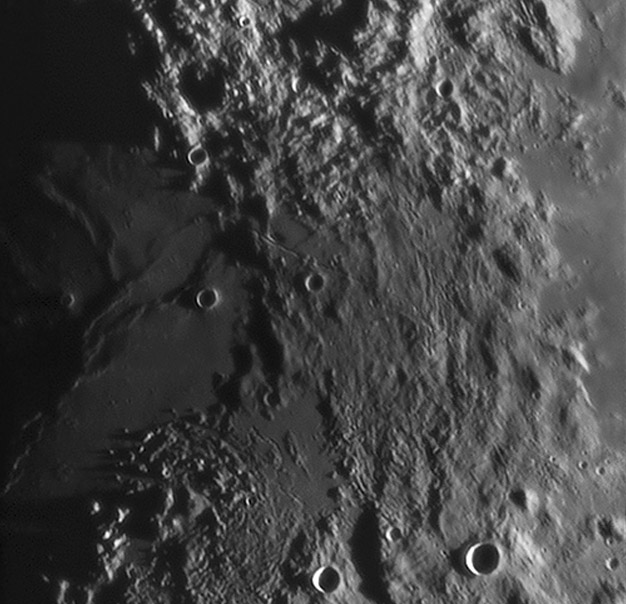June 17, 2010
Still Minute
image by Stefan Lammel, Uxbridge, England
Scientists have confidently stated for 40 years that the Moon is bone dry. That conclusion was based on repeated laboratory determinations that the Apollo samples did not include hydrous minerals - rocks containing water in their crystal structure. That observation was consistent with the concept of a magma ocean - the melting of either the entire Moon or the top few hundred kilometers of it - soon after it formed. The great heat would have led to the evaporation of any water and its escape to space. Now, with scientific instruments many times more sensitive than those available during the Apollo era, structural water has been identified in those same Apollo samples. A new Chuck Wood
Technical Details
This is an enlarged excerpt from the LPOD of Aug. 12, 2007. Imaging details are found there.
Big Note Would you like to participate in a mentored exploration of MoonWorld? If so, email Lisa McFarland (lisamc@cet.edu) for details and to schedule your mentored mission at least one week in advance. Missions can include up to four (4) team members. If you do not register with a team of four, CET may place you on a mission team.
Related Links
Rükl plate 33
COMMENTS?
Click on this icon File:PostIcon.jpg at the upper right to post a comment.




